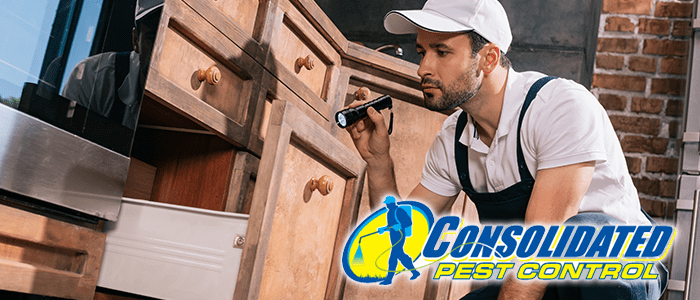
Keeping Senior Living Facilities Pest-Free: A Guide from Consolidated Pest Control
Senior living facilities have unique pest control requirements. These facilities house elderly individuals who may have health conditions and weakened immune systems, leaving them more susceptible to diseases that pests carry. The presence of pests in senior living facilities can also cause anxiety, discomfort, and distress among its residents. So, you might be wondering what you can do to keep senior living facilities pest-free.
It is crucial to have a proactive pest management plan in place. In this blog post, Consolidated Pest Control will discuss the steps you can take to prevent and treat pest infestations in senior living facilities.
1. Importance of Pest Prevention to Help Keep Senior Living Facilities Pest-Free
Prevention is key when it comes to pests. Senior living facilities need to have a pest management plan in place before inspections or infestations occur. Regular inspections by pest control professionals are necessary to detect any signs of infestation or potential threats. Insect and rodent traps can also help identify any pest presence in the facility. Once the presence of pests is detected, prompt and effective measures should be taken to eliminate the infestation.
Pest prevention practices include:
– Proper sanitation: keep the facility clean and free of food debris, spills and crumbs that can attract pests.
– Store food properly: use air-tight containers and store food in the appropriate areas of the facility.
– Seal entry points: Pests can enter the facility through various entry points, such as cracks and openings in walls, floors, and ceilings. Seal all potential entry points to prevent pests from entering the facility.
– Landscaping: Ensure the outdoor environment surrounding the facility is well maintained by trimming trees and shrubs and preventing standing water.
2. Common Pests in Senior Living Facilities
Senior living facilities are susceptible to a variety of pests that can cause significant harm to their residents. Some of the most common pests found in senior living facilities are:
– Rodents such as mice and rats, which can spread diseases through feces and urine.
– Cockroaches, which can trigger asthma and allergies, and contaminate food and surfaces.
– Bed bugs, which can cause skin irritation, sleep disturbances, and psychological distress.
– Ants, which can contaminate food and bite residents, causing pain and discomfort.
3. Preventing Rodent Infestations
Rodents are opportunistic pests, and they can grow and reproduce quickly if not caught early. Senior living facilities should have a pest management program in place that includes inspections, monitoring, and elimination measures. Here are some ways of preventing rodent infestations:
– Eliminate sources of food, as rodents are attracted to food sources.
– Seal all entry points, including small holes in walls and floors, around pipes and electrical wires.
– Install door sweeps and weather stripping to the facility’s entrances, including garages.
4. Preventing Cockroach Infestations
Cockroaches are a common pest problem in senior living facilities. They can spread diseases, trigger asthma and allergies, and contaminate surfaces, especially in kitchen areas. Here’s how cockroach infestations can be prevented:
– Keeping the facility clean and free of clutter.
– Removing any standing water, sources of food and shelter.
– Storing food in air-tight containers.
– Fixing any leaks in pipes and appliances.
5. Preventing Bed Bug Infestations
Bed bugs can quickly become a nightmare for senior living facilities. With bed bugs’ ability to survive for long periods without feeding, it’s critical to catch the infestation early. Prevention techniques include:
– Educating staff and residents about bed bugs, their signs, and methods of prevention.
– Regularly inspecting beds and furniture for signs of infestations.
– Staff should respond quickly to resident’s complaints about bed bug bites to prevent further spread of the infestation.
6. Preventing Ant Infestations
Ants are tiny pests that can build colonies in a senior living facility, contaminating food and biting residents. Here’s how to prevent ant infestations:
– Clean all surfaces regularly to eliminate any food sources
– Removing any debris or garbage as they can attract ants
– Sealing any cracks or openings where ants might enter
7. Treatments for Pests in Senior Living Facilities
Pest control treatments should be the last resort if preventive measures fail. Senior living facilities should work with professional pest control companies to develop a pest management plan, including treatments options. Professional pest control companies use pesticides and non-chemical methods to eliminate pests, considering residents’ health and safety.
8. Pest Control Law in Senior Living Facilities
Senior living facilities must comply with state and federal pest control regulations. Proper pest control methods and techniques must be used in the facility. It is essential to engage a licensed pest control professional to handle pest control issues.
9. Why Choose Consolidated Pest Control for Keeping Senior Living Facilities Pest-Free
Consolidated Pest Control offers comprehensive pest control services for senior living facilities, covering preventive and corrective measures. The company uses eco-friendly chemicals and treatments to ensure that the environment is safe for residents. The technicians are trained professionals that follow a strict code of conduct, observing all regulations and requirements. Consolidated Pest Control provides regular inspections, monitoring, and treatment programs to ensure that the facility remains pest-free.
Conclusion for Keeping Senior Living Facilities Pest-Free
In conclusion, senior living facilities need to have pest management plans to prevent pests from invading the facility. Consolidated Pest Control offers comprehensive pest control solutions that cover all types of pests.
The company offers preventative measures and treatment options for infestations. With Consolidated Pest Control, senior living facilities can ensure the protection of their residents’ health and comfort.








